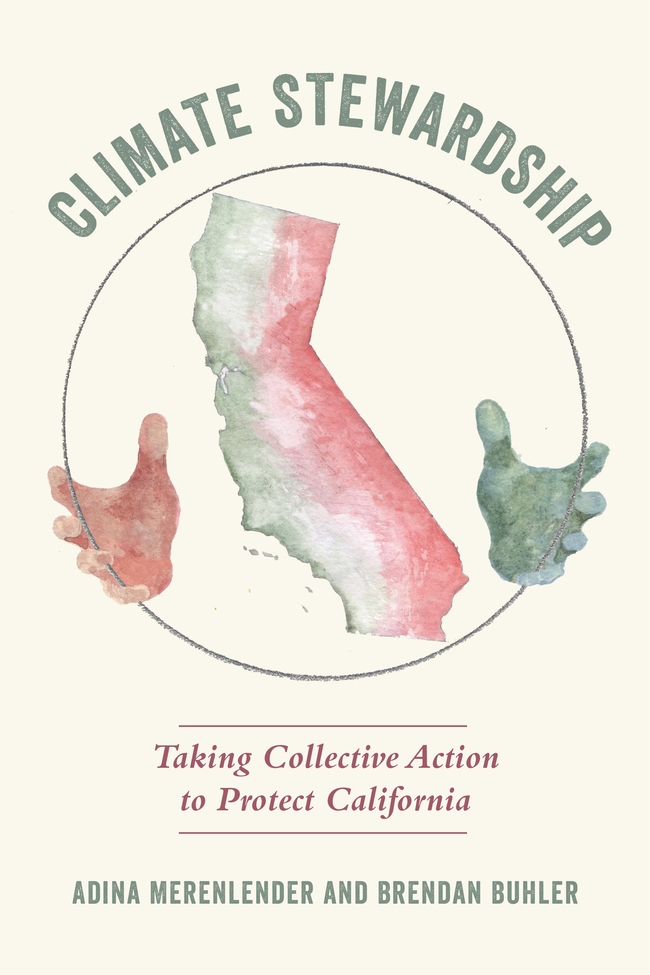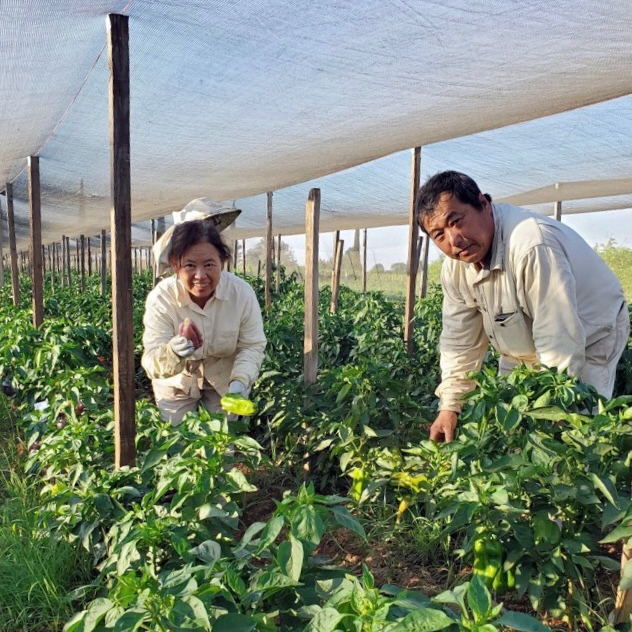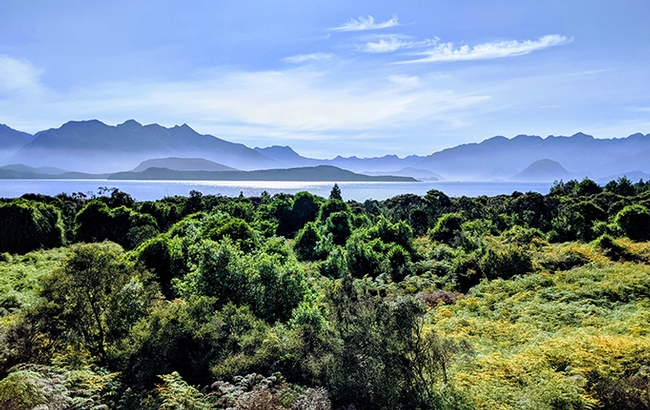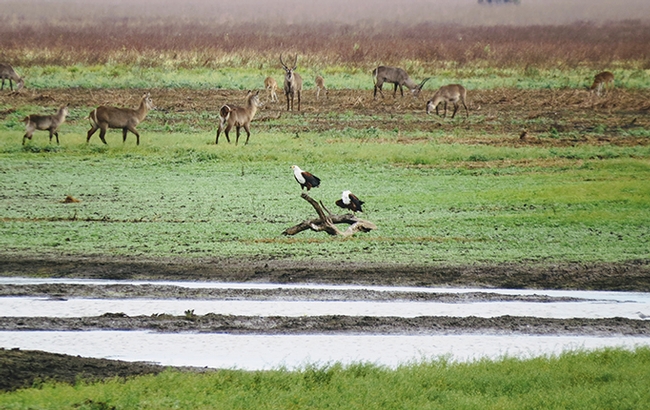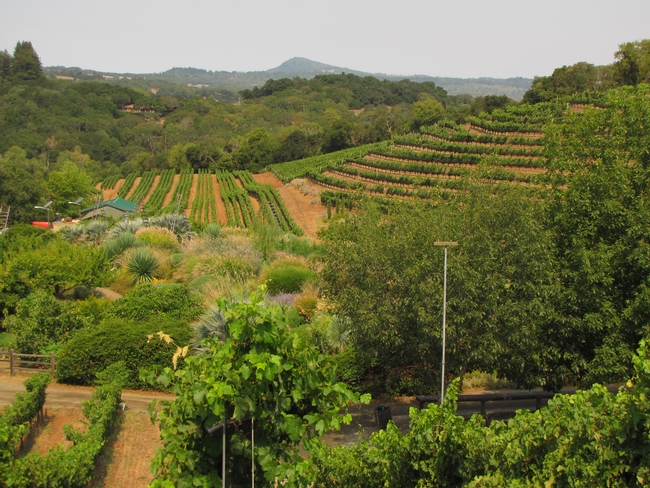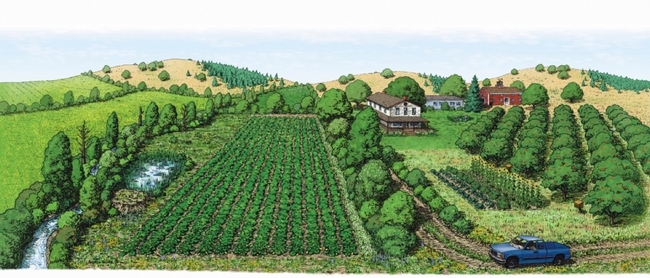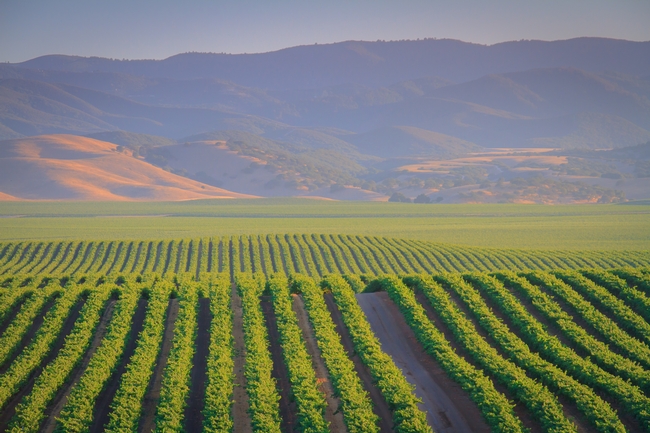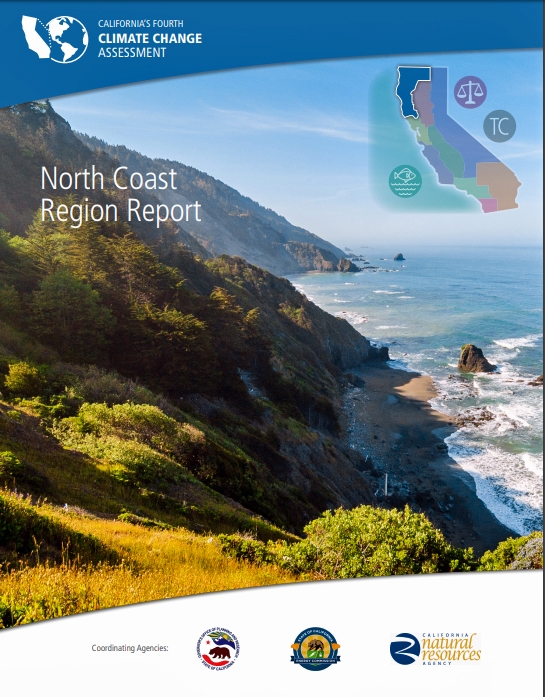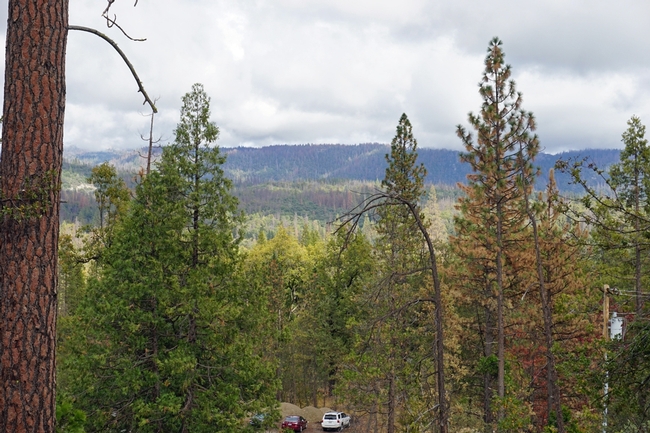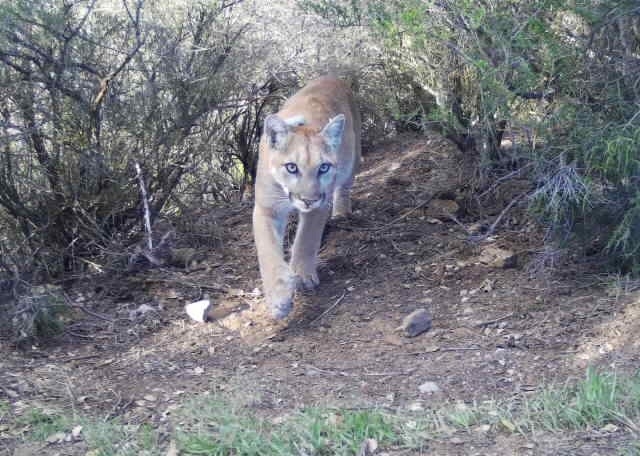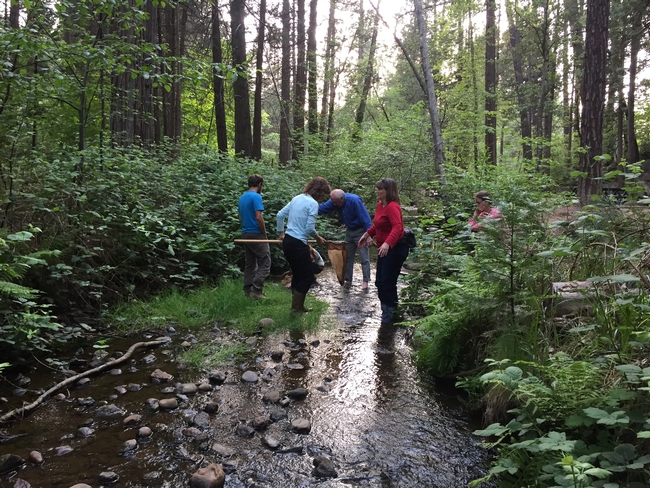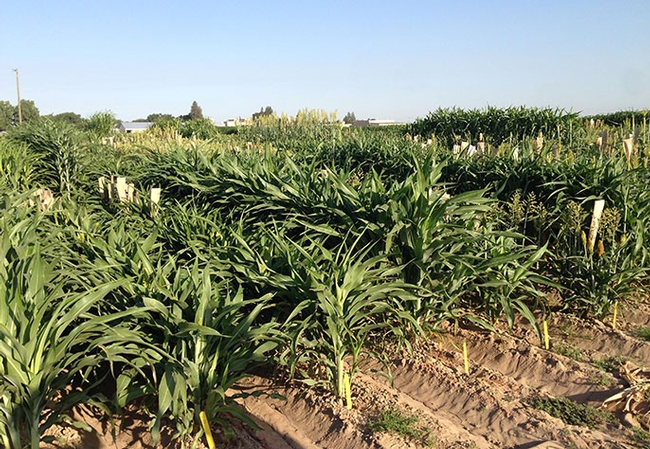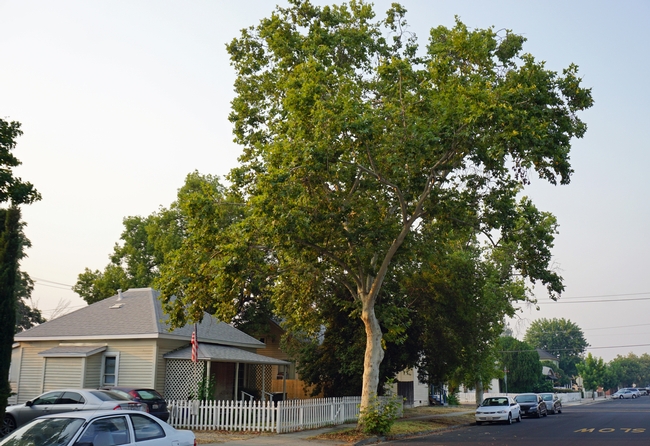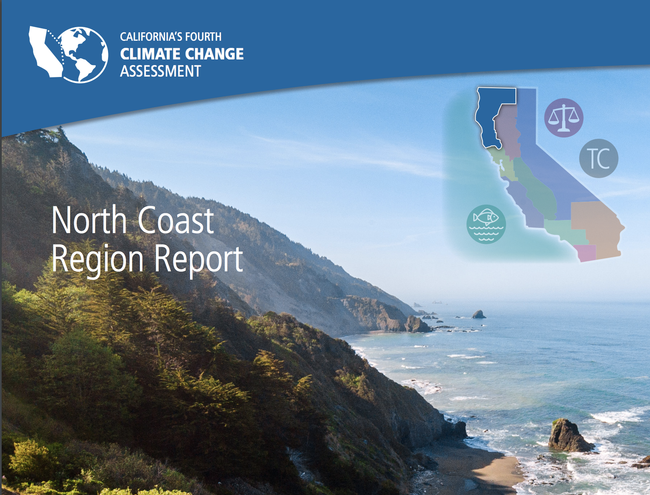Posts Tagged: Adina Merenlender
New book shows how Californians are bolstering climate resilience
Wildfires that generate their own weather, drought, record-breaking heatwaves, and frequent flooding are compelling more people to try to mitigate and adapt to climate change. A new book co-authored by Adina Merenlender, UC Cooperative Extension specialist at UC Berkeley, shows how Californians are working together across diverse communities and landscapes to improve resilience and address climate justice.
“The climate leaders profiled in this book are inspirational,” said Wade Crowfoot, California's Natural Resources secretary, in his review of “Climate Stewardship: Taking Collective Action to Protect California.”
“Their stories reflect the diversity of California's people and landscapes and show the power of collective action to create change,” he wrote. “They also reveal our profound connection with nature and with one another, and the power of nature-based solutions to address the climate crisis. Perhaps most importantly, this wonderful book reminds us of what we are capable of as individuals to improve the future of our planet and people.”
Published by UC Press, “Climate Stewardship” will be required reading for participants of the UC Climate Stewards certification course, but it isn't a textbook. The book is a collection of personal stories of individuals who are striving to improve climate resilience.
“The stories, many gathered through UC Cooperative Extension efforts, show what everyday people can do together to improve community resilience across agricultural, natural and urban landscapes,” Merenlender said. “‘Climate Stewardship' also offers an uplifting way to learn about climate science that is most relevant for California's communities and ecosystems.”
Michael Yang, UC Cooperative Extension small farms and specialty crops agricultural assistant, works with Hmong farmers in Fresno County, such as the Tchieng family, to advance climate-smart agriculture. In the book, Ka Tchieng, whose family grows vegetables, wrote about how they are adapting their farming practices to climate change. "My parents, Siong and Fong Tchieng, are picking green bell, purple bell and sweet Italian peppers. The shade is to help prevent sunburn on the peppers during the hot summer in Fresno,” she wrote.
While the book is research-based, it is written for a general audience, Merenlender said.
“It is written in narrative form with stories meant to showcase what can be done and some relevant climate science is woven throughout,” she said. “For this reason, it is meant to be of interest to a wide California audience.”
The book is illustrated with original paintings by Obi Kaufmann, author of “The California Field Atlas,” and co-authored by Brendan Buhler, an award-winning science writer.
For more information about the book, see the California Naturalist blog at http://calnat.ucanr.edu/cs/Climate_Stewardship. To buy the book from UC Press, visit https://www.ucpress.edu/book/9780520378940/climate-stewardship.
Protected areas needed across climates to safeguard biodiversity
Around the world, countries have established protected areas as the primary defense to reduce widespread biodiversity loss and guard vulnerable habitats. However, species and ecosystems are adapted to particular climates—as those climates shift across and outside of protected area boundaries, species may track them into unprotected landscapes where human land uses degrade conservation potential.
In a new study published in Science Advances today, Berkeley researchers offer a broad analysis of how protected areas will continue to capture the climates suitable for species into the future. The study was led by Paul Elsen, a climate adaptation scientist at the Wildlife Conservation Society and former postdoctoral researcher in the Department of Environmental Science, Policy and Management, and it was co-authored with Cooperative Extension specialist Adina Merenlender, recent Ph.D. graduate Eric Dougherty, and Bill Monahan, currently with the U.S. Forest Service.
The authors first determined how climate is expected to change within all terrestrial protected areas globally by utilizing data from several major global climate models and maps of protected areas. They found that over the next 50 to 80 years, the total amount of protected land situated in both warm and cold climates, over a wide range of annual precipitations, is expected to decline significantly.
“We calculate that most countries will fail to protect over 90% of their available climate at current levels, forcing many species to shift into unprotected lands,” says Merenlender.
Species or ecosystems adapted to specific climatic conditions would disproportionately be impacted, such as those in tropical and subtropical moist broadleaf forests, boreal forests, tundra, savannas, grasslands and shrublands.
The authors then tested how different mitigation and adaptation strategies might work to limit the amount of change species may experience in protected areas within countries, thereby reducing species' vulnerability. For example, they investigated whether greenhouse gas mitigation or the addition of new protected areas were more effective for building resilience to climate change.
“Protected areas are invaluable to conserving biodiversity, but where those protected areas are positioned in relation to available climates can have a huge influence on their ability to reduce species' vulnerability to climate change,” says Elsen.
If countries were to expand protected areas to double the diversity of climates under protection, the authors find, they would retain 118% more land area of today's protected climates into the future. By contrast, reducing greenhouse gas emissions in accordance with global targets would increase retention of currently protected climates by 102%.
“If we adopt a strategy for increasing protection that seeks to maximize the diversity of climate types represented within protected areas—for example, cold, warm, hot, wet, temperate, arid, etc.—we stand a much better chance that protected areas will continue to encompass the climatic conditions that support currently protected biodiversity,” says Elsen, lead author of the study.
The authors were surprised to find that simply establishing more protected areas wasn't the solution to building resilience. “Whether it's ‘half-earth' or a more modest target, we need more protected areas but they must be climate smart,” says Merenlender. “This means protecting a full range of climate types, or parks will not protect biodiversity as intended into the future.”
The long-term conservation potential of protected areas depends on careful maintenance of appropriate biotic and abiotic conditions that promote biodiversity. The authors stress that decisions about land use, which are socio-economic in nature, need to also account for conservation and ecosystem health. “Species that track climate into unprotected landscapes may face landscapes that are highly modified by agriculture, infrastructure, development, and other human activities, so it is still critical that we work to increase the suitability of unprotected lands for biodiversity, too,” says Elsen.
The study includes recommendations for planning for future reserves that stand to better protect biodiversity and will be more resilient to climate change over the long term.
Read the study on the Science Advances website.
Bring the wild back into our farmlands to protect biodiversity, researchers say
Berkeley — With a body the size of a fist and wings that span more than a foot, the big brown bat must gorge on 6,000 to 8,000 bugs a night to maintain its stature. This mighty appetite can be a boon to farmers battling crop-eating pests.
But few types of bats live on American farms. That's because the current practice of monoculture – dedicating large swathes of land to a single crop – doesn't give the bats many places to land or to nest.
Diversifying working lands – including farmland, rangeland and forests – may be key to preserving biodiversity in the face of climate change, says a new review paper published this week in Science by conservation biologists at the University of California, Berkeley.
Diversification could be as simple as adding trees or hedgerows along the edges of fields, giving animals like birds, bats and insects places to live, or as complex as incorporating a patchwork of fields, orchards, pasture and flowers into a single working farm.
These changes could extend the habitat of critters like bats, but also much larger creatures like bears, elk and other wildlife, outside the boundaries of parks and other protected areas, while creating more sustainable, and potentially more productive, working lands.
“Protected areas are extremely important, but we can't rely on those on their own to prevent the pending sixth mass extinction,” said study co-author Adina Merenlender, a UC Cooperative Extension Specialist in the Department of Environmental Science, Policy and Management at UC Berkeley. “This is even more true in the face of climate change, because species will need to move around to adapt to shifts in temperature and climate.”
A win-win for wildlife and for farms
Maintaining even small pieces of the original landscape – even a single tree– can help conserve the original diversity of species, Merenlender said. Clearing oak woodlands and shrublands to establish large vineyards hits many native species hard. Animals that are well adapted to urban and agricultural areas, such as mockingbirds, house finches and free-tail bats, continue to flourish, while animals that are more sensitive to disturbance, like acorn woodpeckers, orange-crowned warblers and big brown bats, begin to drop away. “If you can leave shrubs, trees and flowering plants, the habitat suitability -- not just for sensitive birds but also for other vertebrates – goes way up,” Merenlender said. This is true not only in California's vineyards, but on working lands around the world.
Incorporating natural vegetation makes the farm more hospitable to more creatures, while reducing the use of environmentally degrading chemicals like herbicides, pesticides and man-made fertilizer.
The ideal farming landscape includes woodland pastures and vegetable plots bumping up against orchards and small fields, said Claire Kremen, a professor in the Department of Environmental Science, Policy and Management. Integrating livestock produces manure which can fertilize the crops, while those same crops produce feed for livestock. Birds and bats provide pest control, and bees boost crop production by pollinating plants.
“It is possible for these working landscapes to support biodiversity but also be productive and profitable,” Kremen said. “And ultimately, this is where we have to go. We just can't keep mining our soils for their fertility and polluting our streams – in the end, this will diminish our capacity to continue producing the food that we need. Instead, we must pay attention to the species, from microbes to mammals, that supply us with critical services, like pollination, pest control and nutrient cycling”
“We have some amazing diversified farms, sustainably managed forests and species-rich rangelands here in California that exemplify working lands for conservation around the world,” Merenlender said. “We are calling for a scaling up of this approach around the world, and to do that we champion community-based action and more supportive polices” Kremen concludes.
RELATED INFORMATION
CONTACTS
Claire Kremen, ckremen@berkeley.edu, 510-367-2100 (cell)
Adina Merenlender, adinam@berkeley.edu, (707) 489-4362
UC Cooperative Extension works in local communities to help Californians adapt to climate change
Californians received bleak news last month when the state released its fourth assessment of climate change in California. The report predicts severe wildfires, more frequent and longer droughts, rising sea levels, increased flooding, coastal erosion and extreme heat.
“It's great to be living in a state where science and facts around climate change are valued,” said UC Cooperative Extension specialist Adina Merenlender, “but the recent forecasts may make you want to devour a quart of ice cream in a pool of salty tears.”
Modern civilization has changed the world climate, and even dramatic reductions in global greenhouse gas emissions at this point won't turn back the clock. The warming now predicted by Cal-Adapt is likely already “baked in,” even with our best mitigation efforts, said Igor Lacan, UC Cooperative Extension advisor in the Bay Area of California.
California has been a leader in facing the future climate head on. The state's first comprehensive assessment on climate change was produced in 2006 under then-Gov. Arnold Schwarzenegger. The second assessment, released in 2009, concluded that adaptation could reduce economic impacts of loss and damage from a changing climate. The third assessment was shaped by a request for more information on the adaptation options in the 2009 report. The fourth assessment was the first effort to break down global climate predictions and their impacts onto specific regions of California.
Author of the North Coast Region Report of the Fourth Assessment, Ted Grantham, praised state leaders for pushing forward efforts to slow climate change and adapt to the new weather conditions expected in California.
“California is playing a unique role in filling the void of leadership on this issue that the federal government was beginning to address under the Obama administration,” Grantham, a UC Cooperative Extension specialist based at UC Berkeley, said.
Across California, UC Cooperative Extension specialists and advisors are working in their local communities to prepare for warming temperatures and adapt to the changing climate. Following are examples of the efforts now underway.
Managing forests to survive the future
Among the suggested adaptation strategies in the 81-page North Coast Region Report, written by Grantham and his colleagues, the authors encourage government agencies and private forest owners to use prescribed fires and active forest management to reduce an overgrowth of trees and shrubs that fuel the more frequent and intense fires expected in the future.
Although climate change will create conditions conducive to catastrophic wildfire, the reason for dangerous forest overgrowth is related to decades of fire suppression on the landscape.
“Our forests are much denser and have more fuel buildup than they would have under a natural fire regime,” Grantham said. “Mechanical thinning, removing wood from the landscape and prescribed fires can help limit the impacts of wildfire.”
Native American tribes are being tapped to share their traditional ecological knowledge to inform this practice.
“Native Americans have used fire since time immemorial to manage their landscapes,” Grantham said.
Connecting habitats to allow species movement
When climate changes, plant and animal species may find their current habitats no longer fit the environment where they evolved. The fourth assessment technical report, Climate-wise Landscape Connectivity: Why, How and What Next, written by UCCE specialist Adina Merenlender, documented potential techniques to erase barriers to plant and animal movement.
“When we talk about wildlife corridors today, we might view a road as a barrier,” Merenlender said. “With climate change, the movement is over a much longer range for species to find suitable habitat at the end of the century.”
The report says research is needed to compare different approaches to designing climate-wise connectivity, determining how wide corridors need to be, and quantifying the impact of natural and anthropogenic barriers on possible range shifts.
California's wine industry is based on international varieties that come from Northern France, where the climate is cool, mild and consistent.
“They really require a cool to warm climate, not a hot climate,” said Glenn McGourty, UCCE viticulture advisor in Mendocino County.
There are many wine grape cultivars from Southern Europe – areas in Italy, Portugal and Spain – that are adapted to heat and make quality wines, but aren't well known. The varieties include Monepulciano, Sagrantino, Periquita and Graciano.
McGourty is studying how these cultivars perform in the warm interior of Mendocino County at the UC Hopland Research and Extension Center.
“We have many options as climates warm in the interior part of California to make wine that needs less amelioration in the winery compared to cultivars from Northern France,” McGourty said.
Recruiting and training climate stewards
The UC California Naturalist Program is moving full steam ahead with a new Climate Stewards Initiative to build engaged communities and functioning ecosystems that are resilient to changing climates.
California Naturalist, with trained volunteers across the state working with myriad conservation organizations, will be using its educational network to improve the public's understanding of climate change and engage the public in community action and local conservation.
“Climate stewards will offer in-person communication with your neighbors, tapping into science,” Merenlender said. “Improving climate literacy is an important outcome, but that won't happen through a website.”
Helping growers modify farming practices due to changing climate
USDA Climate Hub has awarded a grant to UC Cooperative Extension to support tools to assist growers in making strategic decisions in season and long term.
“We have many credible sources of weather and climate data, but often times we are challenged with translating it into decision support tools tailored to growers' needs,” said Tapan Pathak, UCCE specialist in climate change adaptation in agriculture. “It's too early to say which specific tools we will develop, but we are aiming to help farmers use weather and climate information in decision making processes.”
Pathak is also working with colleagues to analyze how generations of navel orangeworm, a significant almond pest, might shift for the entire Central Valley under climate change and how growers can adapt their practices to manage the higher pest pressure.
Using epigenetics to impart drought tolerance
At the UC Kearney Agricultural Research and Extension Center in Parlier and the UC West Side Research and Extension Center in Five Points, sorghum nurseries are being grown under drought and well-watered conditions to compare the environmental impacts on the plants' gene expression.
“We hope to tease out the genetics of drought tolerance in sorghum,” said Jeff Dahlberg, UCCE specialist, who is managing the trials at Kearney. “Using sorghum as a model, we expect this research to help us understand drought tolerance in other crops as well.”
Historically, the genetic manipulation of crops, which has been critical to increasing agricultural productivity, has concentrated on altering the plant's genetic sequence, encoded in its DNA.
Recent studies have shown that environmental stresses – such as drought – can lead to epigenetic changes in a plant's genetic information. Because epigenetic changes occur without altering the underlying DNA sequence, they allow plants to respond to a changing environment more quickly.
Cities can plant street tree species suited to future climate
Many common street trees now growing in the interior of California are unlikely to persist in the warmer climate expected in 2099, according to research published in the July 2018 issue of the journal Urban Forestry & Urban Greening. (Read the research report here until Sept. 27, 2018)
“Urban foresters in inland cities of California should begin reconsidering their palettes of common street trees to prepare for warmer conditions expected in 2099 due to climate change,” said the study's co-author, Igor Lacan, UC Cooperative Extension environmental horticulture advisor in the Bay Area.
Common trees in Coastal California cities appear to be better suited to withstand the 2099 climate.
“Our research shows that some trees now lining the streets of cities like Fresno, Stockton and Ukiah are likely to perform poorly in 2099,” Lacan said. “Those cities need to look at the conditions – and trees – now found in El Centro, Barstow and Fresno respectively.”
Trees to shade California in a warmer future
The changing climate predicted for California – including less rain and higher day and nighttime temperatures – is expected to cause chronic stress on many street tree species that have shaded and beautified urban areas for decades.
Realizing that popular trees may not thrive under the changing conditions, UC Cooperative Extension scientists are partnering with the U.S. Forest Service in a 20-year research study to expand the palette of drought-adapted, climate-ready trees for several of the state's climate zones.
“The idea is to look at available but under-planted, drought-tolerant, structurally sound, pest resistant trees for Southern California that do well in even warmer climates,” said Janet Hartin, UCCE horticulture advisor in San Bernardino County.
Twelve tree species were selected for each climate zone in the comparative study, with several area parks used as control sites.
Managing the forest for survival in warmer conditions
UC Cooperative Extension scientists are part of a collaborative research project with the University of Nevada, Reno, CAL FIRE and the U.S. Forest Service aimed at developing new strategies to adapt future forests to a range of possible climate change scenarios in the Sierra Nevada.
“It includes the idea that we may be struggling just to keep forests as forests, let alone having the species we value,” said Rob York, manager of UC Berkeley's Blodgett Forest Research Station near Georgetown.
Forests sequester a tremendous amount of carbon. As the climate changes, foresters will need to be proactive to reduce the risk of these massive carbon sinks becoming carbon sources.
“We're working to mitigate predicted impacts to forests, including regeneration failures, drought mortality and catastrophic wildfire,” Ricky Satomi, UCCE natural resources advisor in Shasta County.
At three separate study sites across the Sierra Nevada, novel approaches to forest management are being implemented to develop treatments that scientists believe will increase resilience, resistance and adaptability of Sierra Nevada mixed conifer forests.
The 2018-21 project is led by Sarah Bisbing, forest ecology professor at the University of Nevada, Reno, and funded with $2.7 million from CAL FIRE.
Climate change impacts on vulnerable communities
The latest climate assessment also reports on the serious nature of climate threats to vulnerable communities and tribal communities in California, with a focus on working collaboratively with these communities on research and solutions for resilience.
“The impacts of climate change will not be experienced equally among the population,” Grantham said. “The most significant public health and economic impacts – from flooding, extreme heat, air quality degradation, etc. – will be disproportionately experienced by vulnerable populations, including people of color, the poor and the elderly.”
The assessment includes a Climate Justice Report, which shares the idea that no group of people should disproportionately bear the burden of climate impacts or the costs of mitigation and adaptation. The report suggests collaborating with these communities on research and solutions for resilience.
UC ANR scientists contribute to California’s Fourth Climate Change Assessment
The California Natural Resources Agency released California's Fourth Climate Change Assessment today (Monday, Aug. 27), at http://www.ClimateAssessment.ca.gov. UC Agriculture and Natural Resources scientists contributed substantially to the report.
The Fourth Assessment is broken down into nine technical reports on the following topics:
- Agriculture
- Biodiversity and habitat
- Energy
- Forests and wildlife
- Governance
- Ocean and coast
- Projects, datasets and tools
- Public health
- Water
The technical reports were distilled into nine regional reports and three community reports that support climate action by providing an overview of climate-related risks and adaptation strategies tailored to specific regions and themes.
The regional reports cover:
- North Coast Region
- Sacramento Valley Region
- San Francisco Bay Area Region
- Sierra Nevada Region
- San Joaquin Valley Region
- Central Coast Region
- Los Angeles Region
- Inland South Region
- San Diego Region
The community reports focus on:
- The ocean and coast
- Tribal communities
- Climate justice
All research contributing to the Fourth Assessment was peer-reviewed.
UC Cooperative Extension ecosystem sciences specialist Ted Grantham – who works in the Department of Environmental Science, Policy and Management at UC Berkeley – is the lead author of the 80-page North Coast Region Report. Among the public events surrounding the release of the Fourth Assessment is the California Adaptation Forum, Aug. 27-29 in Sacramento. For more information, see http://www.californiaadaptationforum.org/. Grantham is a speaker at the forum.
Other UC ANR authors of the North Coast Region Report are:
- Lenya Quinn-Davidson, UC Cooperative Extension area fire advisor for Humboldt, Siskiyou, Trinity and Mendocino counties
- Glenn McGourty, UC Cooperative Extension viticulture and plant science advisor in Mendocino and Lake counties
- Jeff Stackhouse, UC Cooperative Extension livestock and natural resources advisor for Humboldt and Del Norte counties
- Yana Valachovic, UC Cooperative Extension forest advisor for Humboldt and Del Norte counties
UC Cooperative Extension fire specialist Max Moritz contributed to sections of the main report on Forest Health and Wildfire and to the San Francisco Bay Area Report.
UC ANR lead authors of technical reports were:
- Economic and Environmental Implications of California Crop and Livestock Adaptations to Climate Change, Daniel Sumner, director of UC ANR's Agricultural Issues Center
- Climate-wise Landscape Connectivity: Why, How and What Next, Adina Merenlander, UC Cooperative Extension specialist
- Visualizing Climate-Related Risks to the Natural Gas System Using Cal-Adapt, Maggi Kelly, UC Cooperative Extension specialist


